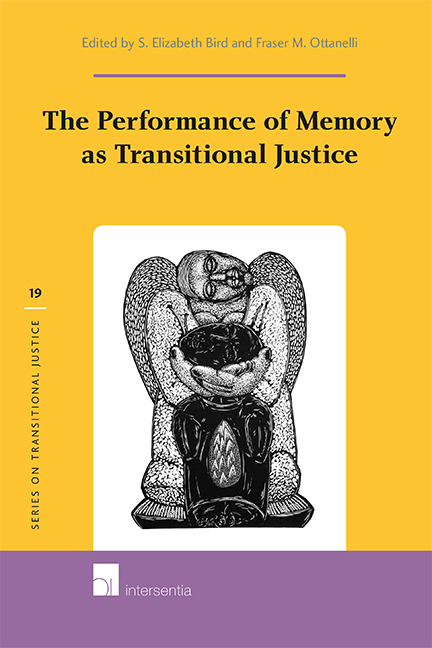Introduction
Published online by Cambridge University Press: 16 December 2020
Summary
The ever-repeated incidents of massacres and mass violence that happen in time of conflict have been a source of analysis by academics, the media, human rights organisations and legal entities. Many times, such events are concealed and witnesses silenced or ignored, often to preserve impunity, or in the name of ‘moving on’. Yet the impulse to tell the story seems universal, and is essential if true reconciliation is to be achieved. Across the globe, many ways have been developed to construct and maintain the memory of collective trauma, whether formally, through truth commissions, national memorials, and forensic initiatives, or informally, through grass roots initiatives, art, literature, ritual performances, or other means. As Iwona Irwin-Zarecka notes, ‘to secure a presence for the past demands work – “memory work” […] Produced, in effect, is what I call here the “infrastructure” of collective memory, all the different spaces, objects, “texts”, that make an engagement with the past possible’.
Memory work, or as we term it here, the performance of memory, is not confined to the narration of atrocity, of course; sometimes we see memory performance as part of joyful commemorations that engage with valued moments of the past. More painfully, memory work grapples to come to terms with the past's appalling and shameful moments – often working to exhume and make visible the experience of these moments, and sometimes (but not always) to seek reparation. As Anne Rigney notes, such work may be seen ‘as part of a more general turn to a “performative” mnemonics […] as a counterpart to the monumental.’
Such reclamation and public performance of shared memory of atrocity has become familiar in many contexts, offering opportunities for often scattered individual narratives to become institutionalised in a variety of ways, most notably through memorial activities. Drawing on Pierre Nora's influential concept of ‘lieux de mémoire’ (places of memory), there is now a significant body of scholarship on how collective memory is constructed (and contested) in such contexts, much of this focusing on how narratives function rhetorically. These numerous case studies show how the specifics of particular experiences produce a great variety of distinctive public expressions of memory.
- Type
- Chapter
- Information
- Publisher: IntersentiaPrint publication year: 2014
- 1
- Cited by



